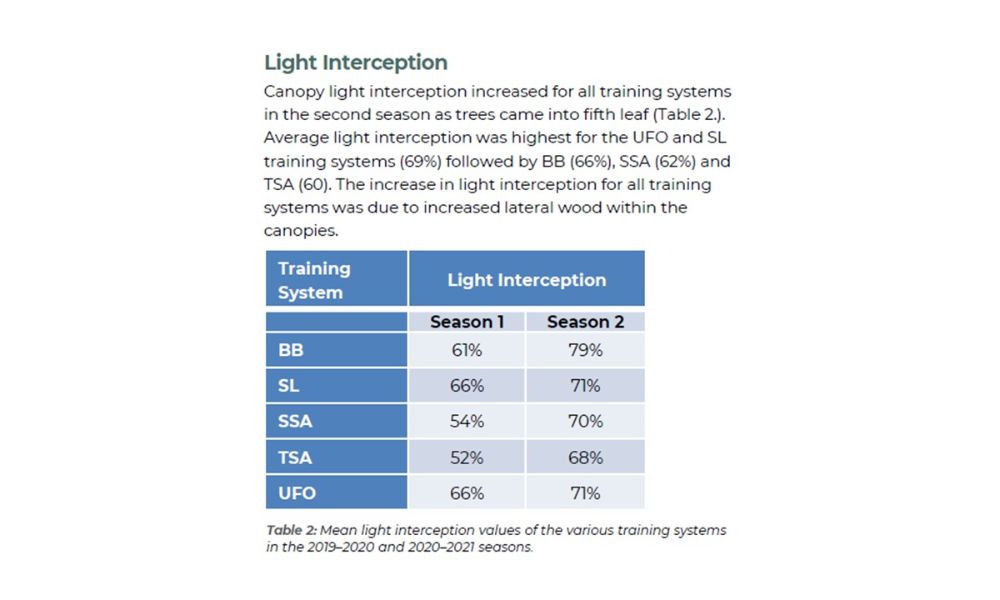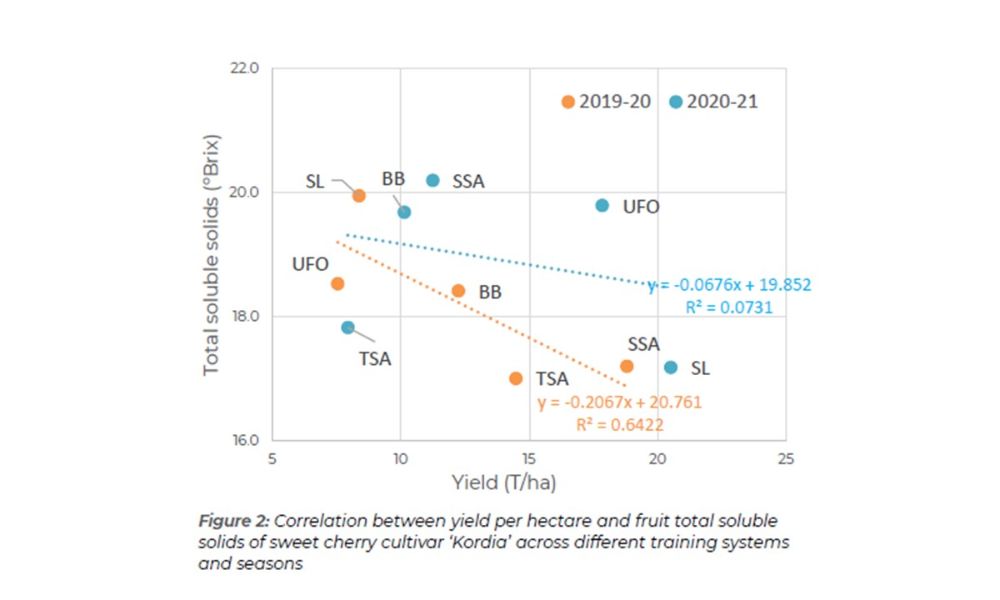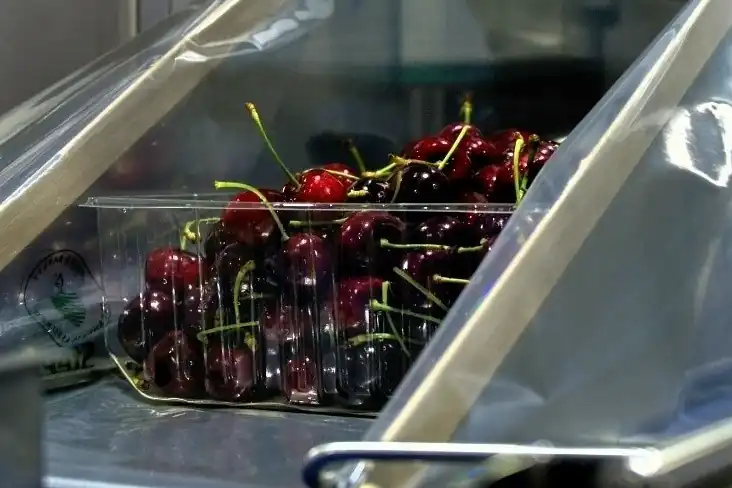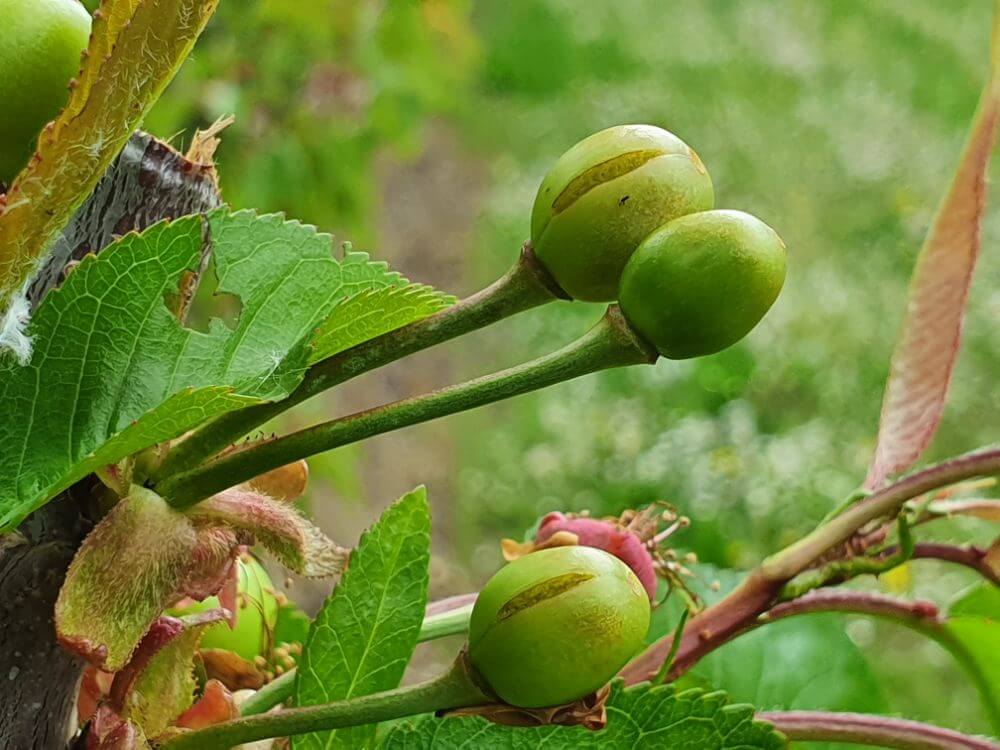The use of semi-dwarfing rootstocks has increased the orchard productivity, leading to the creation of high and super-high density cherry orchard. In addition to planting density, light interception is affected by cultivar, tree shape and height, row orientation, leaf area index, and seasonal vegetative growth.
Thus, choosing an appropriate training system could result in increased light interception, leading to increased production and fruit quality. Indeed, we should remember that excessive canopy shading results in reduced fruiting, decreased fruit weight, poor color development, and low total soluble solids content.
Light interception is optimized by choosing breeding systems suited to the growing environment. Bibaum systems, for example, are well adapted to areas with abundant light, high temperatures, and extended growing seasons. 2D planar farming systems reduce canopy exposure to light during the most intense hours (solar noon), thus protecting the developing fruit from overexposure to light.
The research we are presenting you today was carried out at the University of Tasmania.
In this study, the performance of different breeding forms of 'Kordia' grafted on 'Krymsk 5' (semi-dwarfing rootstock) was evaluated. The training systems evaluated were the 2D planar training systems of upright fruiting offshoot (UFO), super spindle axe (SSA), tall spindle axe (TSA), Bibaum (BB), and steep leader (SL) over two seasons. In the two seasons, light interception was highest in UFO and SL (69% of incident light) and lowest in BB (66%). SSA had the highest yield (15.1 t ha), followed by SL (14.5 t ha) and UFO (12.7 t ha).
In the two seasons, light interception was highest in UFO and SL (69% of incident light) and lowest in BB (66%). SSA had the highest yield (15.1 t ha), followed by SL (14.5 t ha) and UFO (12.7 t ha).

In terms of fruit quality, this study confirms that at the same crop load conditions, there is a strong correlation between light interception and dry matter and soluble solids content. In addition, when lateral-bearing cultivars (such as Kordia) are grown in planar form, adequate spacing between uprights is necessary to achieve optimal light interception and fruit quality.

According to the results of this study, breeding forms like BB, TSA and SL offered sufficient space to allow lateral fruiting wood formation. Although the appropriate crop load for 'Kordia' grafted on K5 has not yet been identified, the results suggest that it is highly dependent on the training system considered, since lateral wood production may be limited depending on the developmental stage and final structure of the tree.
In the second year of research, seasonal variations had the greatest impact on fruit production and quality, with relatively cool temperatures, considerable rainfall and reduced solar radiation during flowering and fruit development. Within a season, however, variation in light interception related to breeding forms and crop load affected cherry yield and quality parameters.
A longer-term study is needed to better understand the advantages and disadvantages of lateral-bearing cultivars. However, this work has revealed fascinating new results that may allow a different training system in 'Kordia' depending on the growing environment for better efficiency in terms of light interception, fruit quality and productivity.
Fonte: CH Stone, DC Close, SA Bound, I Hunt (2022). Training systems for sweet cherry: Light relations, fruit yield and quality. Agronomy, 2022.
Melissa Venturi
University of Bologna (IT)
Cherry Times - All rights reserved














